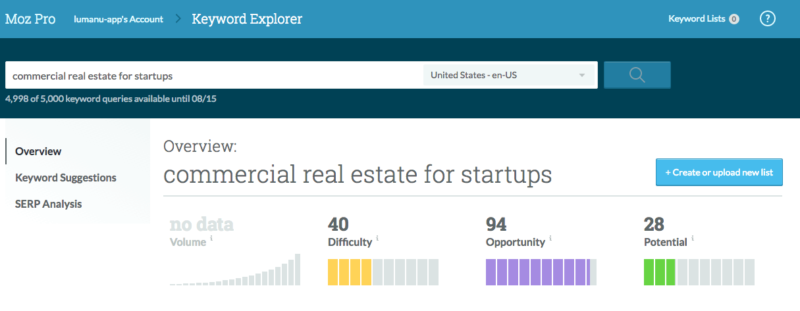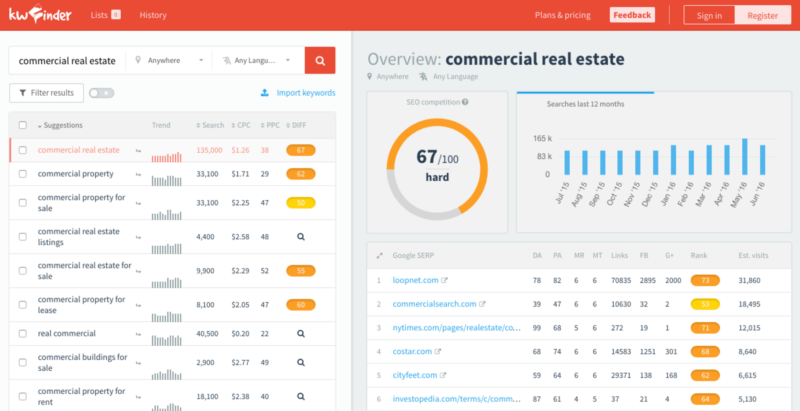Using social metrics + SEO + questions to create content that drives inbound traffic
How do you create great content that captures organic search and social traffic alike? Columnist Matthew Barby explains his method for identifying content themes and topics.
Content marketing delivers results when it addresses what potential customers are searching for and sharing on social media. Content marketing delivers great results when it addresses what a large number of customers are searching for that your competitors are not covering.
So, how do you find out exactly what customers are looking for in search and social and identify potential competitive gaps? In this article, I will show you how to:
- analyze SEO data for your topics, and uncover winning content ideas;
- validate your content ideas with social engagement metrics; and
- use forums to identify trending questions related to your topic.
How to analyze SEO data for your content marketing topics
You can use related keywords and long-tail search results to identify exactly what customers are searching for (search volume) and understand potential competitive gaps. Let’s run through an example for “commercial real estate.”
A great way to start is using a tool like the Moz Keyword Explorer for your topic:
The four colored bars give a lot of insight into which topics (or, more accurately, customer searches) to build your content around. In general, the perfect topics to target have high Volume, low Difficulty, high Opportunity and high Potential. Here’s what all of those mean:
- Volume is average monthly searches for your topic.
- Difficulty is Moz’s algorithm run for how hard it is to land on page 1 of Google (the Promised Land) given current competition on page 1. Moz looks at Domain Authority and SEO quality of existing results and gives you a 1–100 score.
- Opportunity is relative click-through rate for the first 10 organic results versus ads/verticals/maps and so on. This score is higher when ad competition is lower.
- Potential is Moz’s combined estimate pulling together all three metrics (Volume, Difficulty and Opportunity). You can use this when picking and choosing from several options to create your content map.
You can then dive deeper into potential keyword suggestions and try out a few interesting related topics. The more niche you go, the lower the difficulty tends to be (ability to rank higher in SERP).
I find Moz’s “Potential” metric tends to be understated for smaller brands targeting more niche keywords, as it underestimates actual search volume for your content (It will be considered for related searches):
While Moz Pro is a great tool, it costs money. Currently, the lowest-priced tier runs $99/month. If that’s out of your budget range, fear not, as there are other more affordable (even free) options. Here’s an example from kwfinder.com:
You will notice they provide keyword recommendations, overall search volume, and difficulty via “seo competition.” I really like how they give this score. Here’s how they break it down:
- 0 – 9: “go for it”
- 10 – 19: “super easy”
- 20 – 29: “easy”
- 30 – 39: “not hard”
- 40 – 54: “possible”
- 55 – 74: “hard”
- 75 – 89: “super hard”
- 90 – 100: “don’t do it”
This is one example of a lower-priced offering, and price is based on usage, with free, $12-per-month and $25-per-month options.
Another great free tool is Google AdWords keyword planner. One drawback is that Google is focused on paid ads versus creating content for ranking organically. Competition and CPC are still great indicators of how focused others are on specific keywords, meaning those with higher search volume and lower CPC and competition are more likely to be better targets for content marketing and ultimately earn higher organic search results placements.
In order to get the most value out of this research, it’s important to build content for search. To improve SEO, make sure to use your targeted keywords in the URL, title and headings (h1, h2 and so on) of your content where possible.
How to validate your content marketing ideas against social media metrics
Driving traffic via organic search results is only one part of the equation, and social is becoming a more important source of referral traffic. A recent report by Parse.ly (registration required) found that Facebook drove more referral traffic than Google:
I used Lumanu to pull together data around average social engagement metrics per piece of content (blogs and articles) for “commercial real estate” and a few longer-tail themes (also surfaced in Lumanu) which I found potentially interesting.
Lumanu is a startup launched in a early 2016 which gives insights into content performance and identifies influencers for any topic. When a user enters a search topic, Lumanu leverages machine learning to provide content recommendations.
For example, Lumanu’s “Themes” analyzes all content found in the Lumanu index which is related to a user’s specified topic (e.g., “commercial real estate”) and uses natural language processing to suggest themes based on high-performing content related to that topic.
I highlighted two themes above — “commercial real estate for startups” and “virtual reality in commercial real estate” — as they have relatively high engagement on Facebook and LinkedIn.
As you can see, based on average social engagement, “commercial real estate for startups” has much higher potential than “commercial real estate” (which is interesting, as Moz showed the reverse for Google search volume).
This means that more people search for a phrase which contains “commercial real estate,” but more people engage with content on social media written about “commercial real estate startups.” (Note: Engagement is measured by likes, comments and shares.)
Lumanu builds the social engagement metrics from the bottom up (that is, by analyzing all content related to a particular topic). This is a valuable tool to peek inside the walled gardens of Facebook and LinkedIn. (This tool runs $100/month for its deep analytics offering but does offer a seven-day free trial, as well as a completely free content discovery tool.)
How to use online forums to identify additional questions and topics to cover
Forums are a great way to come up with content ideas and connect with potential customers. For example, when I looked for topics related to commercial real estate on Quora, I came across this thread:
Answering this question costs nothing except your time and is a great way to show thought leadership and put your perspective (and brand) in front of potential customers. By looking through the answers, you can see the number of times a response has been viewed and get a good sense of the overall traffic
Bring SEO and social data together to improve inbound
Remember that search and social together account for the majority of referral traffic, so it is worth optimizing for both. I have found that they are not mutually exclusive in planning and tend to complement each other. You can find hidden signals while taking a holistic view of what customers are searching for and engaging with on social.
Opinions expressed in this article are those of the guest author and not necessarily Search Engine Land. Staff authors are listed here.
Related stories







